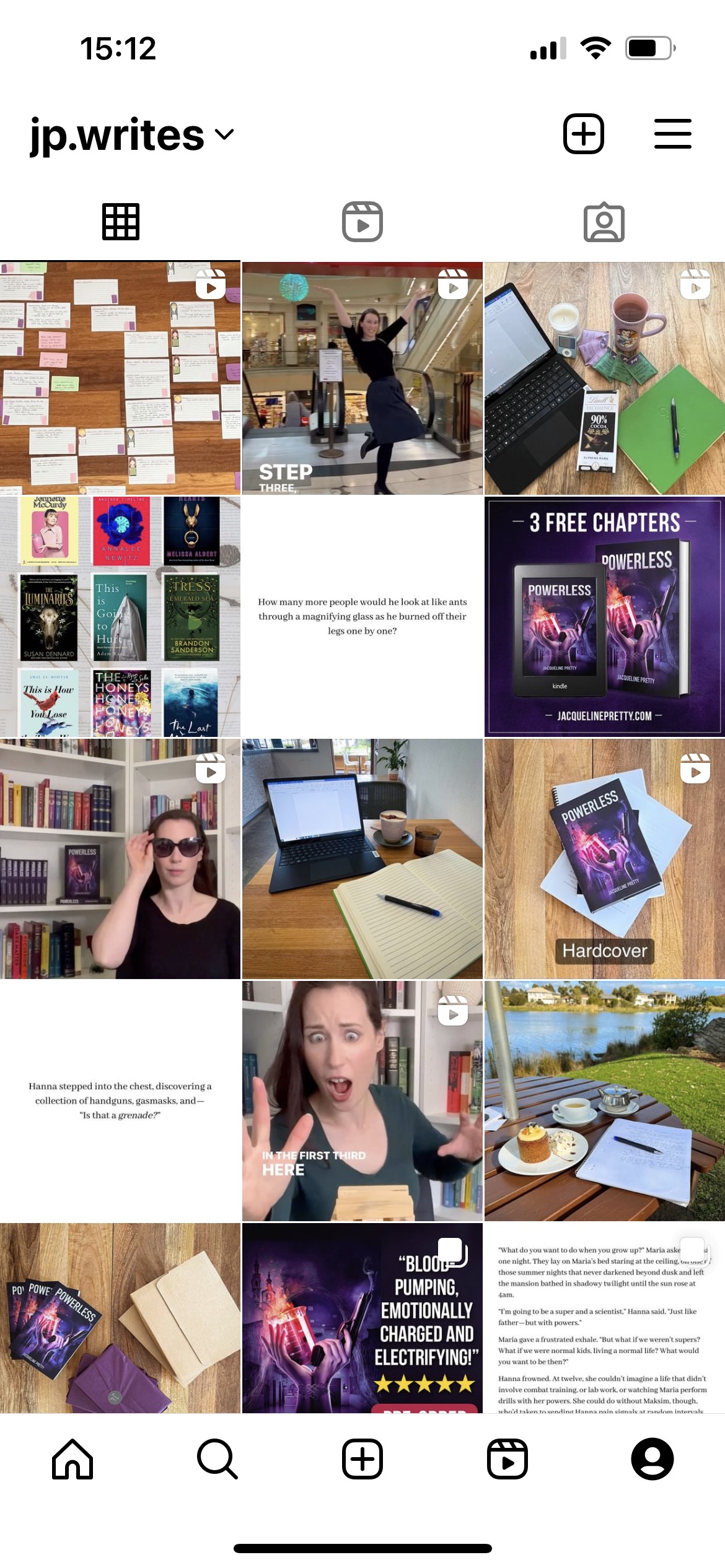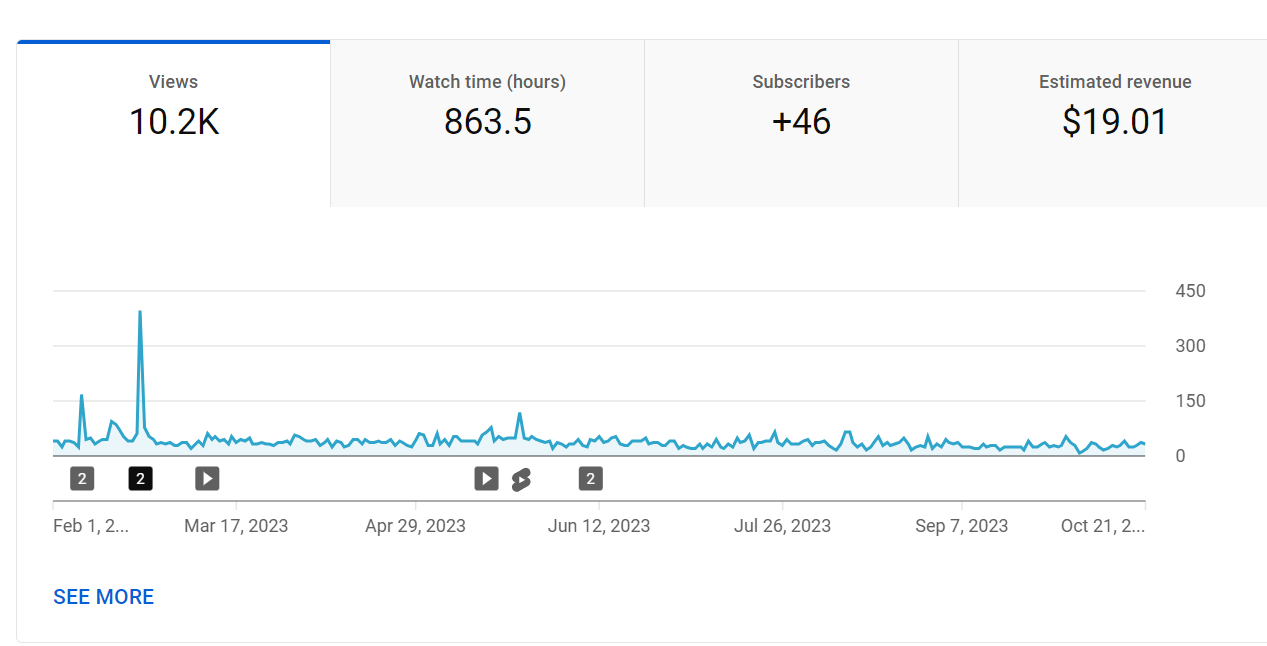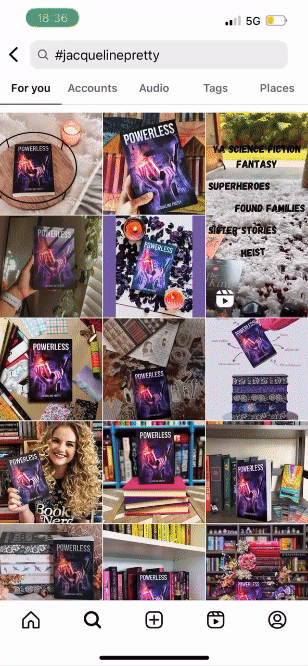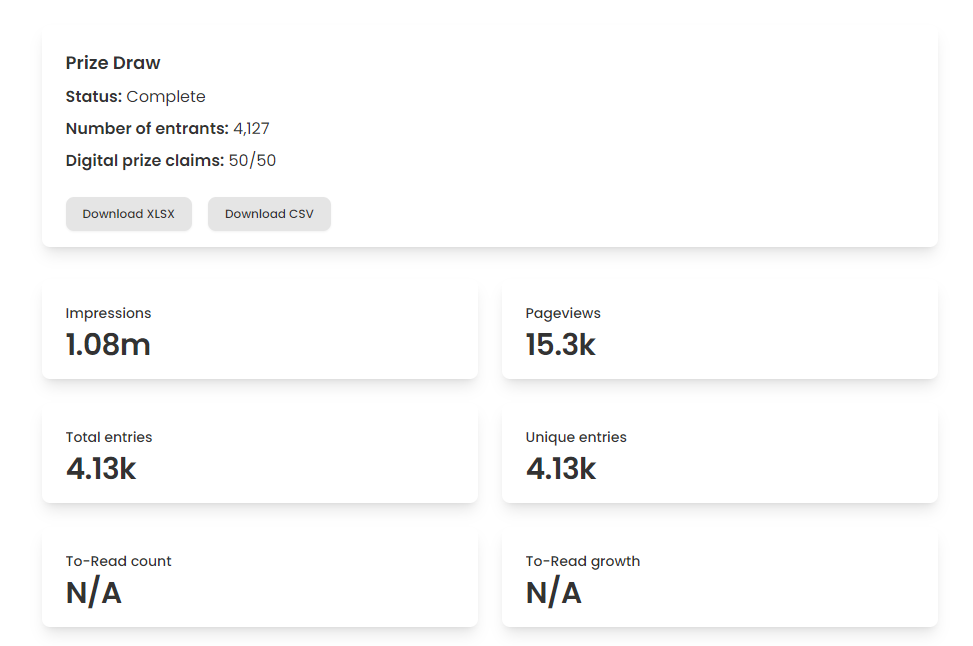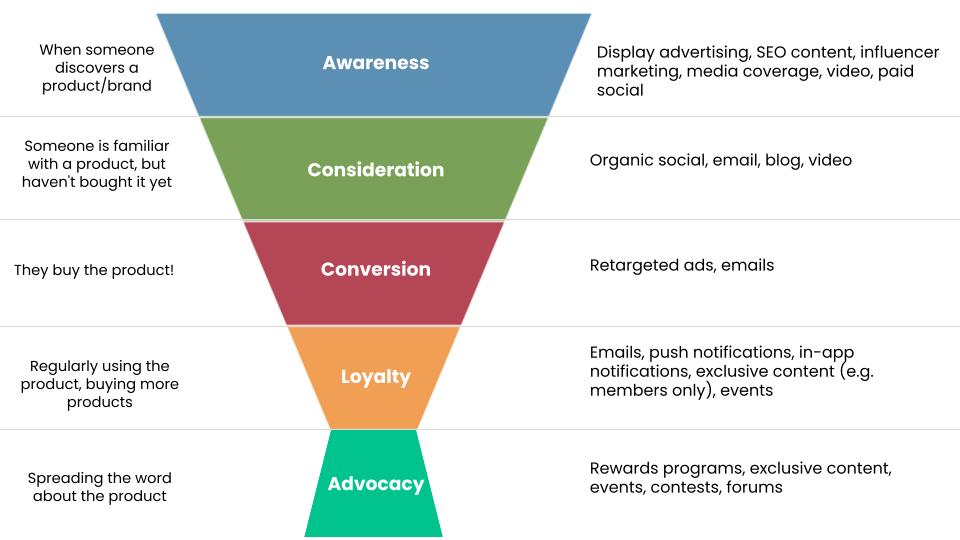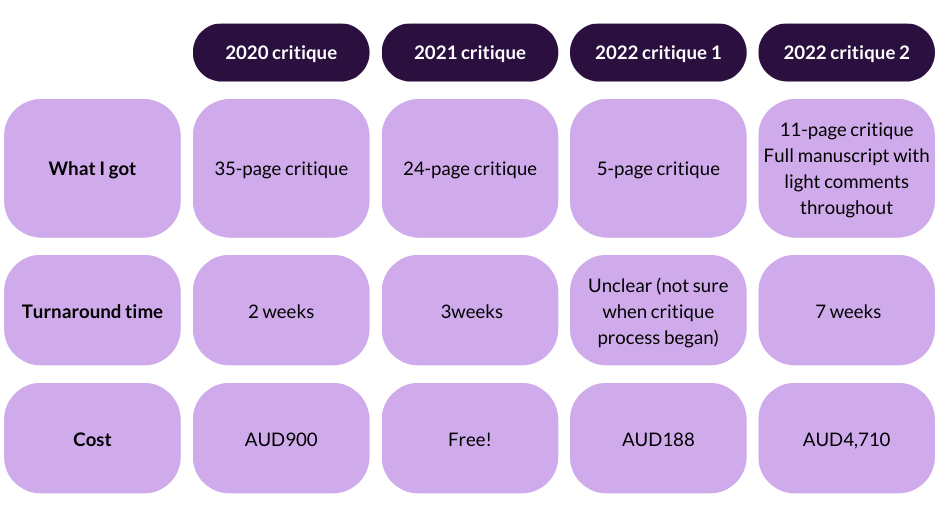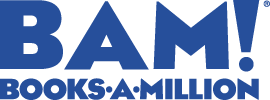How I ghost write a nonfiction book
Did you know that I had a not-so-secret, past life? While this website is focused on my fiction writing, for most of my career I’ve worked in nonfiction. This includes copywriting, content marketing and, from 2013-2019, running a publishing company called Grammar Factory that turned entrepreneurs into authors.
Grammar Factory started with my offering freelance editing services for nonfiction books written by entrepreneurs, and over time the business expanded to offer an end-to-end publishing service, including ghost writing. I still do some editing and ghost writing as a freelancer, hence this article!
What is ghost writing? Ghost writing is when someone other than the author writes a book. This might be because the author doesn’t have the skill, time or desire to write a book themselves, but they see the benefits in being a published author. The ghost writer’s name won’t appear on the cover of the book as the author – instead, they are charging a fee to write words that someone else will put their name on.
When it comes to the books I ghost write, it’s very important to me that it is the client’s book, not mine. This means it is based on their knowledge, skills and experience. In other words, it is a book they could have written, I just happened to be the one typing.
I achieve this by working very closely with the client, including with workshops, recorded interviews, consuming any content they’ve already published (e.g. blog posts, LinkedIn articles, webinars, podcasts, videos) and doing a lot of research using sources they recommend. The goal is for me to be able to write in their voice using their knowledge, rather than taking the topic in my own direction. Again, it’s their book and their knowledge – I’m just the one typing.
How does the process work? I’m so glad you asked. 😉
1. Client vetting
While I enjoy writing nonfiction books and working with entrepreneurs who want to become authors, I’m not the best match for every author or every book. I have a very specific skill set, and I want to make sure that I’m clear on what the author wants to achieve and they’re clear on how I work to make sure we’re a good fit.
This usually starts with the initial enquiry or introduction, when they’ll say a little about the book they want to write. What I do really well are nonfiction how-to and thought leadership books, and I work best when these books are targeted at a lay audience (meaning, the readers don’t share the author’s background and expertise). So when someone reaches out, I want to make sure they are writing this type of book – if someone wants me to help them with a memoir or fiction, I’m not the best person for this. Similarly, if they are writing for a highly technical audience, there are other writers who could do a far better job.
If the initial enquiry looks good, we’ll set up a time to connect to get more detail. In this call, I’ll ask:
- What is the goal of the book? (E.g. what do they want it to do for their business or career?)
- What is the main topic?
- What type of book do they want to write? Is it a practical, how-to book with a step-by-step process their readers can follow? Is it a commentary on trends and challenges facing their industry, and how this will affect their readers going forward? Or would they like to do both?
- Have they produced any content about this topic to date? (E.g. blog posts, brochures, webinars, podcasts, articles on LinkedIn and Medium, etc.)
If the book sounds like a good fit, the next thing I’ll check is ways of working. I have a certain process I follow when ghost writing a book, which starts with a full-day Book Blueprint workshop to get a high-level outline, followed by fleshing out the Blueprint to create an in-depth outline, followed by the first draft.
The reason I take this approach is because I want to make sure we’re on the same page as early as possible as, if we get the foundations right, that helps ensure the rest of the process runs smoothly. If we both agree to the high-level outline on the day of the workshop, the Blueprint document shouldn’t be a surprise because it’s expanding on what we already have. Similarly, if the client signs off on the Blueprint, the first draft shouldn’t have any major surprises, because it’s based on the document they’ve already reviewed. Because I have this process, I’m able to quote a fixed price and timeframe for delivering the book.
My goal is to avoid a situation where I disappear for three months, write a draft, send it to the client and it’s not what they were looking for, which means we need to start over. This approach takes much longer and is more expensive because of the level of work involved. It’s frustrating for the client, because they aren’t getting the result they wanted. And it’s frustrating for me as a ghost writer, as we all have a limited amount of mental and creative energy, and having to go back and redo significant amounts of work wastes this.
So at this point in the conversation, I’ll outline the approach and see if the client is onboard with working this way. Some people aren’t – they would prefer to have a constant back-and-forth with the author and develop their idea as they go. While there’s nothing wrong with this approach, it isn’t the way I prefer to work, so they would work better with a writer who’s comfortable with that approach.
This is also the client’s opportunity to ask questions about me and the way I work. If we both end the conversation and are happy to move forward, we’ll schedule a time for their Book Blueprint workshop.
2. Workshop prep
About two weeks before the workshop, I’ll send through a short list of questions to help them start thinking before the workshop.
These questions are:
- In one sentence, please summarise what your book is about.
- Who is the target reader for this book?
- What is your reader struggling with before reading your book, and how will your book help them?
- What is everything you’d like to include in this book?
- If you had to choose, what are the three most important things to include in your book?
The first three questions will build on our previous discussions, and help ensure we’re both still on the same page (which is important if there is a significant gap between the initial conversation and when the project kicks off).
Question 4 is their opportunity to brain dump. So many of the authors I work with have an endless flow of ideas and enthusiasm, which is awesome, but it can also threaten to derail the process. This gives them an opportunity to get it all down on paper, and it’s something for me to keep in mind as I’m writing the book.
Question 5 then forces them to prioritise. Books are a limited medium – there is only so much that can be covered, and you can only cover one thing at a time. This means you sometimes need to choose. Knowing what they think is most important helps me make the right choices.
3. Book Blueprint workshop
This is a one-day workshop where we follow my Book Blueprint method to create an outline.
This starts with the target reader – where they are before reading the book, and where we want them to be after the book. This discussion will look at problems the reader is experiencing and the roll-on effect of these (e.g. If they are low in confidence, what does that mean for their work and relationships? If they are following an old business model in an evolving industry, what is the cost to their business?), and we want to look at how the book will address these and the benefits the reader will experience going forward.
Once we have a very clear picture of the reader’s before and after state, the next step is to figure out how they get from A to B. This is a brainstorming exercise where the client will list all of the things the reader will need to learn/do/know in order to move forward. Once they have covered everything, I look for any groupings in what they’ve listed to come up with a series of steps, and we work together to find the best order for these.
Each of these steps (or, in a thought leadership book, each of the major topics) will become a chapter, and the next activity is diving into each one. For each chapter, we cover:
- What are we talking about?
- Why is it important?
- How can the reader take action?
In most cases, there will be multiple ‘hows’ (activities or exercises) for each part of the process, so for each of these I will ask the same things – what are we doing, why is it important, and how can they take action?
Throughout the day, we’ll be working in a room with a whiteboard, or I’ll use big sticky notes on the wall to outline everything in front of the client. I find this approach works well, as they have time to think when I’m making notes, but also seeing the notes seems to spur on more ideas for a lot of people. It also means they know exactly what I’m writing down, so we both know we have the same understanding for the direction of the book.
By the end of the day, my goal is to have most (if not all) of the chapters outlined at a high-level. The resulting plan from this session is usually around 5,000-8,000 words.
4. Building the Blueprint
Now I need to flesh out that plan to form a much deeper outline – one that includes all of the research, examples, exercises and anecdotes the client would use if they were writing the book themselves. By the time I’m done, I want a document so detailed that writing the book is easy – all I’ll be doing is expanding bullet points.
This is where I get deep into research. If the client has already created a lot of content, I will be reading through that and, in some cases, copying and pasting it directly into my working document. If not, I will ask them to recommend sources that they like – books, podcasts, YouTube videos, publications, academic papers – and I will use these to build out the plan. The aim is for this to feel like the client’s book, so I’m building my knowledge using the same resources they used to build theirs.
Over about four weeks, I will use this research to expand the Blueprint. After the workshop, I might have had a high-level list for each of the key points in the book, like:
- Why is X important?
- Reason 1
- Reason 2
- Reason 3
During this phase of the project, it will expand to be more like this:
- Why is X important?
- Reason 1
- Author anecdote about seeing this in practice
- Industry survey that backs up the author’s experience
- Reason 2
- Academic research to illustrate this
- Leading companies that are changing as a result
- Reason 3
- Summary of findings from a reputable article that illustrates this point
- Company case study that illustrates the previous three reasons
- Reason 1
(Obviously, things are more detailed when there’s actual content there, but this gives you an idea of the sort of expansion that happens at this step.)
For the most part, I go into hibernation in this process and work very independently. If the client send through articles and other interesting resources while I’m working on this, I’ll review these and see where they can be added in, but there’s no obligation for the client to do this.
What I usually find between the 50-75% mark is there are certain areas where there isn’t good research to back it up, or areas where I want to incorporate more of the client’s experience and story. In this situation, we’ll have a follow-up call where I’ll ask targeted questions to get examples that will slot into the plan.
By the end of this stage, I want to have a Blueprint document that is around 30-50% of my expected word count for the first draft. (In a recent example, I had a 130-page document at the end of this process, which was 30,000 words.) I then send this to the client for review.
Because started with the workshop, I’m not expecting significant changes at this stage – the overarching topics we discuss and the structure should remain the same. If they have feedback, it’s usually along the lines of, ‘I have a great example that could fit in here!’ or ‘can we go into more depth on this topic?’ In other words, we’re looking at things that can slot into the existing structure.
This stage is about 70% of the work on the project, as this is when all the thinking and research happens. This is why it’s so important for us to be on the same page at the end of the one-day workshop, because if things change significantly at this stage, we lose a lot of the work.
What is a significant change at this stage? Aside from wanting to write a book about a completely different topic, these are also big changes:
- Changing the type of book. If we decided to write a how-to book, and then the client decides they would prefer to do a memoir once the Blueprint is complete, this is a significant change. It’s an entirely new book, and means we are starting the process again.
- Changing the method/overall structure of the book. If we defined a seven-step process in the workshop, the client coming to me saying they like three of the steps but don’t like the others is a big change. Or if they say they want to make the process 10 steps instead, that’s also a big change.
- Changing the target audience. This isn’t always a big problem, but it has the potential to be. Different readers have different wants, needs and goals. This means we write different content to suit them. If someone starts a book saying that it’s targeted at the average person on the street and then wants to reposition it so it targets executives looking for enterprise solutions, this will require significant rework – even if it’s a how-to book where the steps are the same, the reasons those steps are important will change depending on the audience, and how they will be implemented could change as well.
All of these changes would mean we’d have to go back to the Book Blueprint workshop and re-outline the book, and then I would need to redo the Blueprint document. Yes, there might be some content that I could copy from one version to another, but it requires a significant amount of rework and rethinking, to the point where we are nearly starting again.
Basically, what we want at this stage is feedback and changes that slot into the existing outline, nothing that significantly changes the outline.
5. Writing the draft
If everything goes well with the review of the Blueprint, I start writing! While I allow more time for this stage, it’s actually the easiest step in the process. Like I mentioned earlier – finishing the Blueprint means that 70% of the project is done – all the research and thinking has been completed, so writing the draft is just a matter of typing.
Of course, things do come up when I’m writing – I’ll realise an example doesn’t work as well as I’d originally thought it would, or that an exercise is missing a step, or that a section feels a bit light compared to others. If this happens, I’ll do some more research or reach out to the clients with questions to flesh things out.
In practice, this means in the first half of the time allocated to writing the draft, I will do a first pass of every chapter of the book. In this first pass, I aim to have a draft that is 80% complete. If there is anything I can’t complete when drafting (e.g. seeing that I need more research or client input, noticing that something isn’t flowing as well as I’d like it to), I will leave it in order to maintain momentum.
Once I’ve done that first pass, the next stage is to go back and address all of my outstanding comments. In a six-week drafting period, I’d expect this to take 2-2.5 weeks, so almost as long as getting the first 80% written.
In the final week, I will be tidying everything up before handing the draft over to the client. This will include:
- Creating diagrams and tables (where necessary) throughout the book (these aren’t the final, designed versions, but something the designer can use as a starting point when we hand the document over)
- Applying correct formatting styles across the document (this makes it look more polished, and also makes things easier when we hand it over to a designer)
- Completing full, academic referencing for sources used throughout the book (this is surprisingly time consuming!)
- Printing out the draft to read it and make notes of areas for improvement (it’s always helpful to read things in a different format – it tricks your brain into seeing it as something new, instead of glossing over things due to your familiarity with the content)
6. Revisions and sign off
Now the client reads the first draft of their book! My standard packages include two rounds of revisions, and allows two weeks for each of them.
Like when the client is reviewing the Blueprint, I’m expecting changes to be pretty minor. These will be along the lines of, ‘can we add another example here?’, ‘what if we add an anecdote here?’, or ‘I found a newer paper that we can reference here, instead of the one you have.’
Changes at this stage are usually small additions or direct substitutions (like switching one reference for another, or adding a new example). Because the client has already signed off on the Blueprint at this stage, they already know what to expect in terms of the content that will be shared and how it will be organised, so there shouldn’t be any changes in terms of structure or content.
And there you have it!
What’s next?
From workshop to sign-off, my ghost writing process takes 12-14 weeks, broken down as follows:
- Blueprint workshop: One day
- Blueprint: Four weeks
- First draft: Six weeks
- Revisions: Two weeks for each round, up to two rounds
Assuming the client and I are both satisfied with the outcome of the Blueprint workshop, this schedule is very reliable. If we don’t have a successful Blueprint workshop (usually either because the client isn’t sure what they want or hasn’t gotten clear enough on the idea, or because we find out the book doesn’t sit in my wheelhouse), then we’d have a conversation about either regrouping at a later date, or about me referring them to another ghost writer who might be a better match.
From here, the client will then look at publishing the book. If they want to traditionally publish they would put together a proposal they can use to pitch publishers (note that this can take place while I’m writing the book – there’s no need to wait for a finished draft before you start pitching). If they self-publish, they will either work with a self-publishing company like my old business (in this approach, the self-publishing company will have a team of professional editors and designers and will charge a fee to produce a first-class print and eBook and distribute it online), or they might engage their own team of freelancers to produce the book.
Did you find this interesting? Did you have more questions about the ghost writing process? If so, please comment to let me know!






